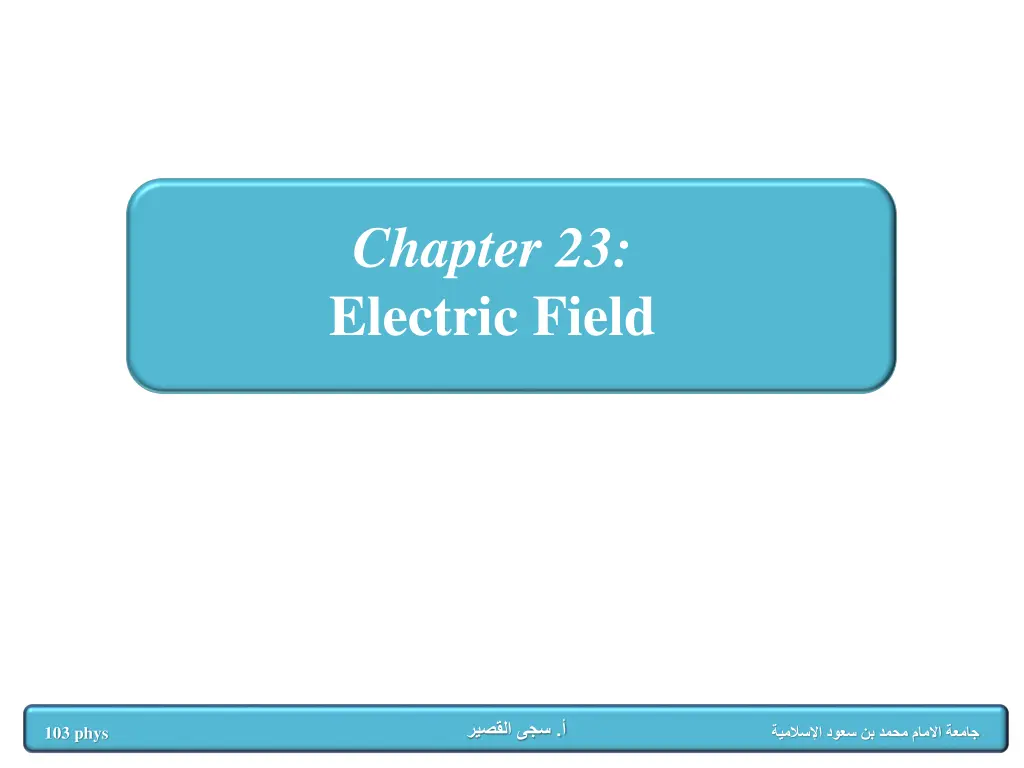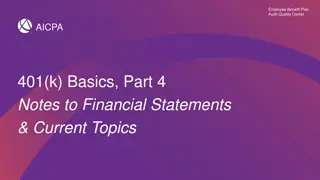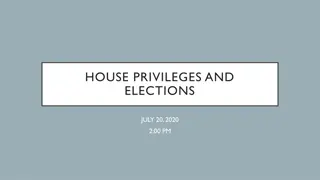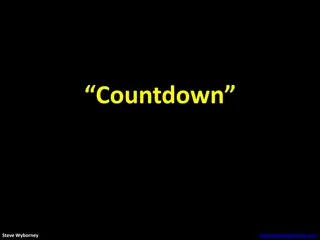
Understanding Electric Fields and Charges: A Comprehensive Overview
Explore the fascinating world of electric charges, conductors, insulators, and the principles of induction and Coulomb's Law in this detailed chapter on the electric field. Learn about the properties of electric charges, conductors, insulators, semiconductors, and how objects can be charged through induction without direct contact. Delve into the nature of positive and negative charges, the quantization of electric charge, and the fundamental principles that govern electric interactions.
Download Presentation

Please find below an Image/Link to download the presentation.
The content on the website is provided AS IS for your information and personal use only. It may not be sold, licensed, or shared on other websites without obtaining consent from the author. If you encounter any issues during the download, it is possible that the publisher has removed the file from their server.
You are allowed to download the files provided on this website for personal or commercial use, subject to the condition that they are used lawfully. All files are the property of their respective owners.
The content on the website is provided AS IS for your information and personal use only. It may not be sold, licensed, or shared on other websites without obtaining consent from the author.
E N D
Presentation Transcript
Chapter 23: Electric Field . 103 phys
23.1 Properties of Electric Charges Experiments 1-After running a comb through your hair on a dry day you will find that the comb attracts bits of paper. 2-Certain materials are rubbed together, such as glass rubbed with silk or rubber with fur, same effect will appear. 3-Another simple experiment is to rub an inflated balloon with wool. The balloon then adheres to a wall, often for hours.
Electric Charges There are two kinds of electric charges: positive and negative. 1. Negative charges are the type possessed by electrons. 2. Positive charges are the type possessed by protons. * Charges of the same sign repel one another *Charges with opposite signs attract one another
Electric Charges * The electric charge q is said to be quantized, and exists as discrete packets, and q = Ne, where N is some integer. * The electron has a charge e and * The proton has a charge of equal magnitude but opposite sign + e. * Some particles, such as the neutron, have no charge. * Electric charge is always conserved in an isolated system.
Conductors Conductors Insulators Semiconductors Electrical conductors are materials in which some of the electrons are free electrons Free electrons are not bound to the atoms These electrons can move relatively freely through the material. When a good conductor is charged in a small region, the charge distributes itself over the entire surface of the material. Examples of good conductors include copper, aluminum and silver. Electrical insulators are materials in which all of the electrons are bound to atoms. These electrons can not move relatively freely through the material. The electrical properties of semiconductors are somewhere between those of insulators and conductors When a good insulator is charged in a small region, the charge is unable to move to other regions of the material. Examples of good insulators include glass, rubber and wood. between those of insulators and conductors Examples of semiconductor materials silicon and germanium.
23.2 Charging Objects By Induction O Charging by induction requires no contact with the object inducing the charge. O Assume we start with a neutral metallic sphere (The sphere has the same number of positive and negative charges) O READ (page 709) the procedure of the experiment
Coulombs experiment Results The electric force between two stationary charged particles The electric force between two stationary charged particles O Is inversely proportional to the square of the separation r between the particles and directed along the line joining them; O Is proportional to the product of the charges q1and q2on the two particles; O Is attractive if the charges are of opposite sign and repulsive if the charges have the same sign; O Is a conservative force.
23.3 Coulombs Law The magnitude of the electric force Where keis a constant called the Coulomb constant, depends on the choice of units. The SI unit of charge is the coulomb (C). The Coulomb constant kein SI units has the value: where the constant is known as the permittivity of free space and has the value 0 The smallest unit of charge e known in nature is the charge on an electron (-e) or a proton (+e) and has a magnitude
Example 1: The Hydrogen Atom The electron and proton of a hydrogen atom are separated (on the average) by a distance of approximately 5.3 x10-11m. Find the magnitudes of the electric force between the two particles.
Example 3 Consider three point charges at the corners of a triangle, as shown below. Find the resultant force on q3. y F31 F32 4.00 m 37.0o - + q2 q3 3.00 m + q1 x Observations: The superposition principle tells us that the net force on q3is the vector sum of the forces F32and F31. The magnitude of the forces F32and F31can calculated using Coulomb s law.
Example 4 Three point charges lie along the x axis as shown in Figure below. The positive charge q1 = 15.0 C is at x =2.00 m, the positive charge q2= 6.00 C is at the origin, and the resultant force acting on q3is zero. What is the x coordinate of q3?
The Electric Field The electric field vector E at a point in space is defined as the electric force Fe acting on a test charge q0 placed at that point divided by the test charge: The vector E has the SI units of newtons per coulomb (N/C). The force on a charged particle placed in an electric field: If the charge q is positive, the force is in the same direction as the field. If q is negative, the force and the field are in opposite directions.
The Electric Field According to Coulomb s law, the force exerted by q on the test charge is test charge source charge Where r is a unit vector directed from q toward q0. This force in Figure (a) is directed away from the source charge q. we find that at P, the electric field created by q is If the source charge q is positive the test charge removed the source charge sets up an electric field at point P, directed away from q. If q is negative the force on the test charge is toward the source charge, so the electric field at P is directed toward
The Electric Field At any point P, the total electric field due to a group of source charges equals the vector sum of the electric fields of all the charges. Thus, the electric field at point P due to a group of source charges can be expressed as the vector sum Ep= E1+ E2+ E3+E4
Example 5 Electric Field Due to Two Charges A charge q1= 7.0 C is located at the origin, and a second charge q2= -5.0 C is located on the x axis, 0.30 m from the origin. Find the electric field at the point P, which has coordinates (0, 0.40) m.
Electric Field Lines The relation between the electric field lines and the electric field vector is this: (1) The tangent to a line of force at any point gives the direction of E at that point. (2) The lines of force are drawn so that the number of lines per unit cross- sectional area is proportional to the magnitude of E. Notice that the rule of drawing the line of force:- (1)The lines must begin on positive charges and terminates on negative charges. (2)The number of lines drawn is proportional to the magnitude of the charge. (3) No two electric field lines can cross each other.
Electric Field Lines Some examples of electric line of force Electric field lines due to +ve line charge Electric field lines due two surface charge
Electric Field Lines The electric field lines for two point charges of equal magnitude and opposite sign (an electric dipole). The number of lines leaving the positive charge equals the number terminating at the negative charge. The electric field lines for a point charge. (a) For a positive point charge, the lines are directed radially outward. (b) For a negative point charge, the lines are directed radially inward. The number of lines leaving +2q is twice the number terminating at -q. Hence, only half the lines that leave the positive charge reach the negative charge. The remaining half terminate on a negative charge we assume to be at infinity. The electric field lines for two positive point charges.



















